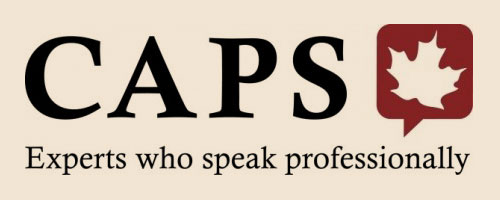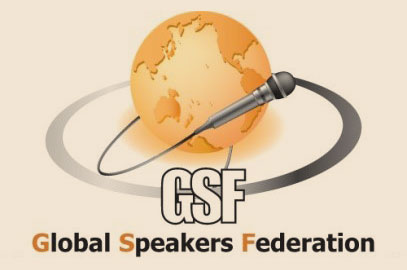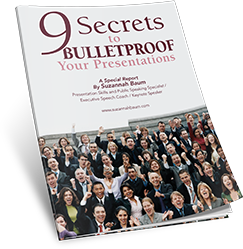How to Command Attention at a Meeting as a Business Woman (my interview with Carleton University Women in Business)
Meetings can be daunting. Not only are you required to present ideas that are thought-provoking, you are also expected to present yourself in a way that enables the goals of your business to succeed. There can be a LOT riding on the content that you present, how you present it, and how the audience receives it.

If you give a longer, rambling presentation filled with too much information, too many irrelevant details, and too much nervous fidgeting, well….it may take you a long time to recover.
Awhile ago, I was among the presentation and public speaking specialists who were interviewed by Emily Coppella of Carleton University Women in Business – CUWIB for Ignite Magazine, about how women can create and facilitate positive conditions to get more successful outcomes from business meetings.
And the result is this fascinating and value-filled article, How to Command Attention at a Meeting as a Business Woman.
Aside from the other experts that are featured in this article, I got a HUGE kick out of being featured alongside Amy Cuddy, famous for her TED talk on power posing (which, weirdly and coincidentally, I just re-watched around 4 days ago!)
Thanks to CUWIB and to writer and Managing Editor Emily Coppella for this excellent, educational article! Visit the CUWIB link to read the article, or you can read the entire article pasted below:
****************************
How to Command Attention at a Meeting as a Business Woman
By: Emily Coppella, Editor at Ignite Magazine
Meetings can be daunting, not only are you required to present ideas that are thought-provoking, you are also expected to present yourself in a way that enables the goals of your business to succeed.
Prepare a Basic Outline
Before walking into the conference room, set yourself up for success by preparing a basic outline of your meeting. You don’t have to rely on cue cards during the meeting, but the simple act of writing out a plan will help your brain absorb this information so you can provide a valuable and time efficient meeting.
Suzannah Baum, a presentation skills specialist and executive speech coach who helps entrepreneurs and business professionals recommends preparing an agenda.
“Have an agenda. This lets the audience know everything that needs to be covered during the meeting, so everyone is on the same page, and focused on the end goal. This will also make your meeting attendees more understanding if you need to interrupt someone to move onto another agenda item. If discussions do take over, then you – as meeting leader – can make the executive decision to drop some agenda items, or push them for a future discussion.”
Practice Public Speaking
Feeling anxious prior to hosting your meeting can be avoided by rehearsing what you have outlined. Alyson Connolly is a voice and public speaking coach. She recently published a book with Wiley, “Public Speaking Skills for Dummies.” One of her basic exercises for those who are nervous in a public speaking environment is to simply practice.
“So many of my clients, when they first meet me, tell me that they never practice their presentation out loud! That is like a pianist getting a piece of music and then sitting down to play in front of an audience. No wonder they get anxious. This doesn’t mean that you have to memorize your speech, you just need to be familiar with it. We also write differently than we speak. When I write a speech, I say it out loud while I walk my dog. Poor buddy gets confused thinking that these are new commands. But then I can figure out which words work for me.”
Channel Your Nerves for Success
While the content of your meeting is crucial, the form it takes is key to making it memorable. Although you may be a bit nervous, Jay Miller, a vocal coach from Toronto, is hopeful about using these nerves for a positive result.
“Nervousness can bring energy and heightened awareness to your performance. If you’re not nervous at all, you’re probably underestimating the importance of your task and you risk coming across as being flat and unengaging. Fritz Perls, who coined the term ‘Gestalt Therapy,’ noted that “fear is excitement without breath.” If the nervous energy is allowed to flow through you, it can be used constructively. When you repress it, it will almost certainly overwhelm you.”
Channel your nervous energy into productivity. Focus on making sure that everyone in attendance feels appreciated. This means scanning the audience by using direct eye contact, and asking people if they require any clarification. This creates a welcoming environment so that your own confidence enables the confidence in others to come out as well.
Channel your nervous energy into productivity. Focus on making sure that everyone in attendance feels appreciated. This means scanning the audience by using direct eye contact, and asking people if they require any clarification. Share on XBuild Your Body Language
If you can’t shake the nerves prior to a meeting, or you simply want to improve your presence as a leader, body language is key. Consider doing a “power stance” prior to the meeting (this can be done in your office, when you get out of your car, or standing in front of the washroom mirror.) Miller recommends practicing some of the social psychologist, Amy Cuddy’s, power poses.
“Any physical exercise that enhances your sense of grounding will make you feel more relaxed and solid, and therefore more confident.”
A Business Insider article by Henry Blodget describes a Cuddy power pose called “Pride,” where one is totally opened-up with arms outstretched. This pose sends the signal of being in charge. Another high-power pose includes “The Wonder Woman,” where one stands tall with feet hip-width apart and arms placed on the hips.
Include Your Team
A team-based approach allows an open conversation with all of your colleagues and invites a dynamic flow of positive energy that encourages new ideas and solutions. By being attentive to your audience, it takes some of the pressure off yourself and requires colleagues to pay more attention in order to participate in the meeting.
Getting Started
When it comes time to begin the meeting, Baum gives some great insight.
“Start on time, and end on time. The first time that you lead a business meeting – you must set out your expectations of the attendees. For example, if you say that your meeting starts at noon, and not everyone shows up on time, start at noon anyway. It’s OK to give 3 or 4 minutes of grace time, but you need to show those who did show up that you respect their time, and show those who did not show up on time that you were serious about the meeting time, and they will miss out on important information if they show up late.”
Own Your Voice
Speech is a huge component of leading a meeting. Be loud and clear, speak affirmatively and take advantage of meaningful silences. Baum recognizes how women can project power in a business meeting.
“You don’t have to be tougher or harder because you’re a woman. But be organized, keep the meeting on track, and keep control of the meeting. Speak authoritatively. Be firm (yet respectful) if someone attempts to take the meeting in another direction. Be firm (yet respectful) if someone is interrupting a lot, and ensure that the people being interrupted get their say. Establish a no-interrupting zone.”
Perhaps you can already envision how a respected leader would use her voice in a professional environment. Miller provides a helpful evaluation based on both body language and voice when leading a meeting.
“If I were evaluating you, as a voice and speech coach, I would ask, ‘Does she have her feet on the ground? Is she sitting forward in her chair, with an open posture? Is she filling the room with her voice, without yelling? And is she being deliberate rather than rushing through what she has to say?’”
It can be difficult to overcome the complex stereotypes of females in the workplace when organizing a meeting. Circulating myths include the idea that women are either inadequate as professional leaders, or altogether too “bossy” to hold respected leadership roles. Using one’s voice to express not only the goals of your company, but your identity as a woman in the workplace, is empowering for all. Baum sums up a lot of these qualms that plague women and holds them back from leading spectacular meetings.
“And don’t worry so much if people think that you’re being overly tough or aggressive. It’s your meeting. If you ensure that your agenda is followed, if you keep the meeting on track, if issues that you need to address move forward or are resolved, and everyone leaves feeling like they’ve been heard, then it’s a success….and you’ll be respected for it.”
If you’re new to leading meetings, or consider yourself an expert, there’s always room to improve your presence as a leader, and assert all the powerful contributions you can make to your company.





